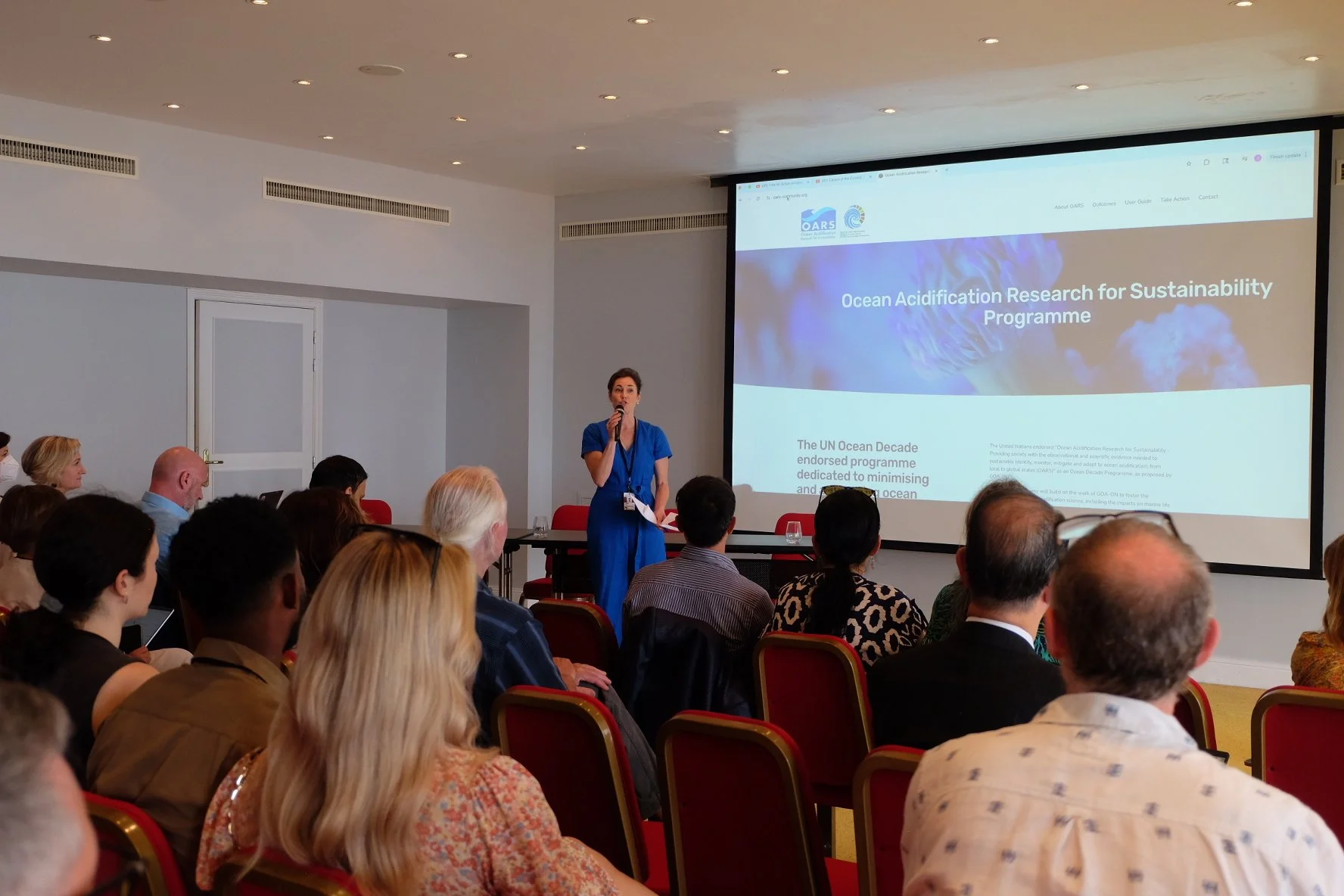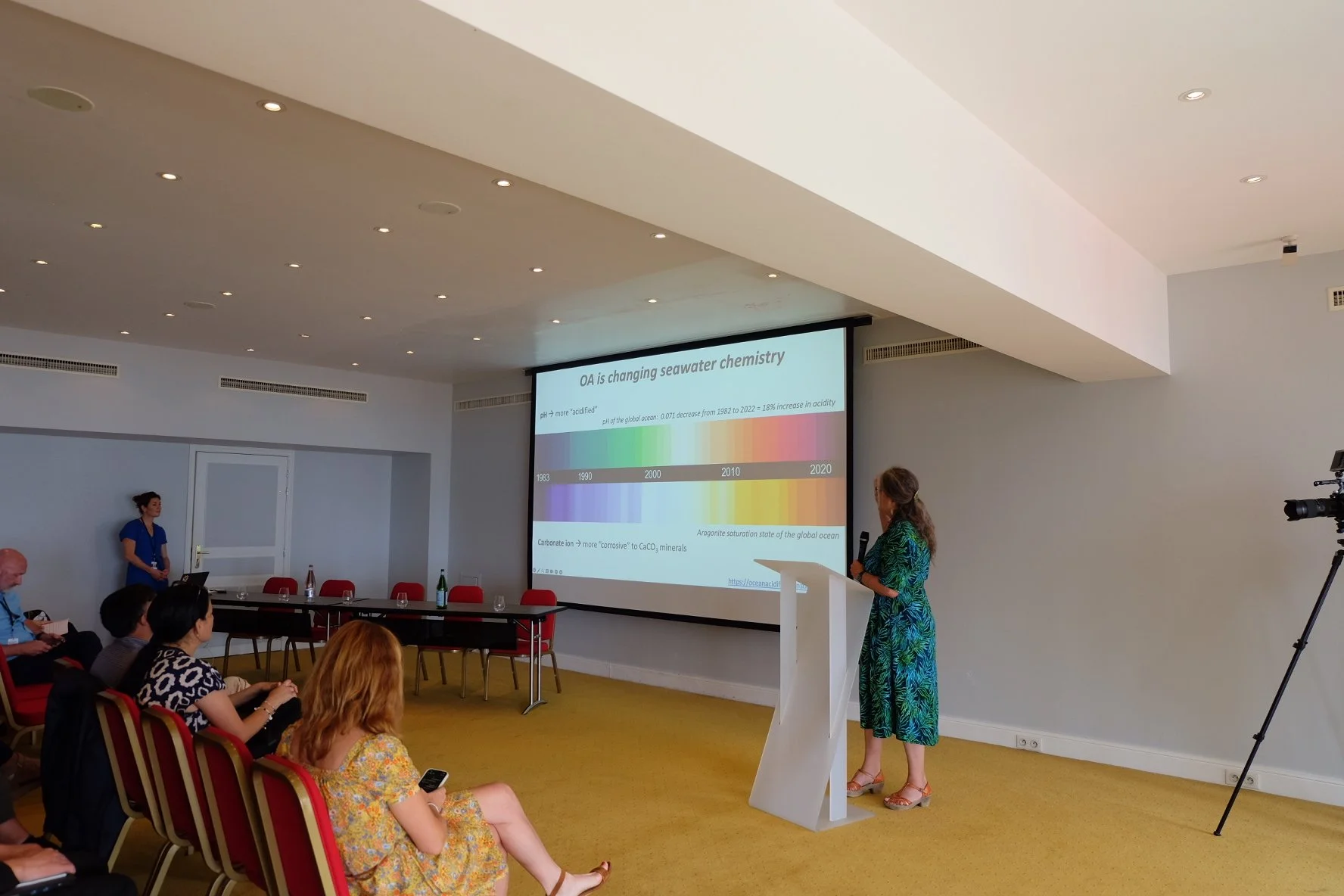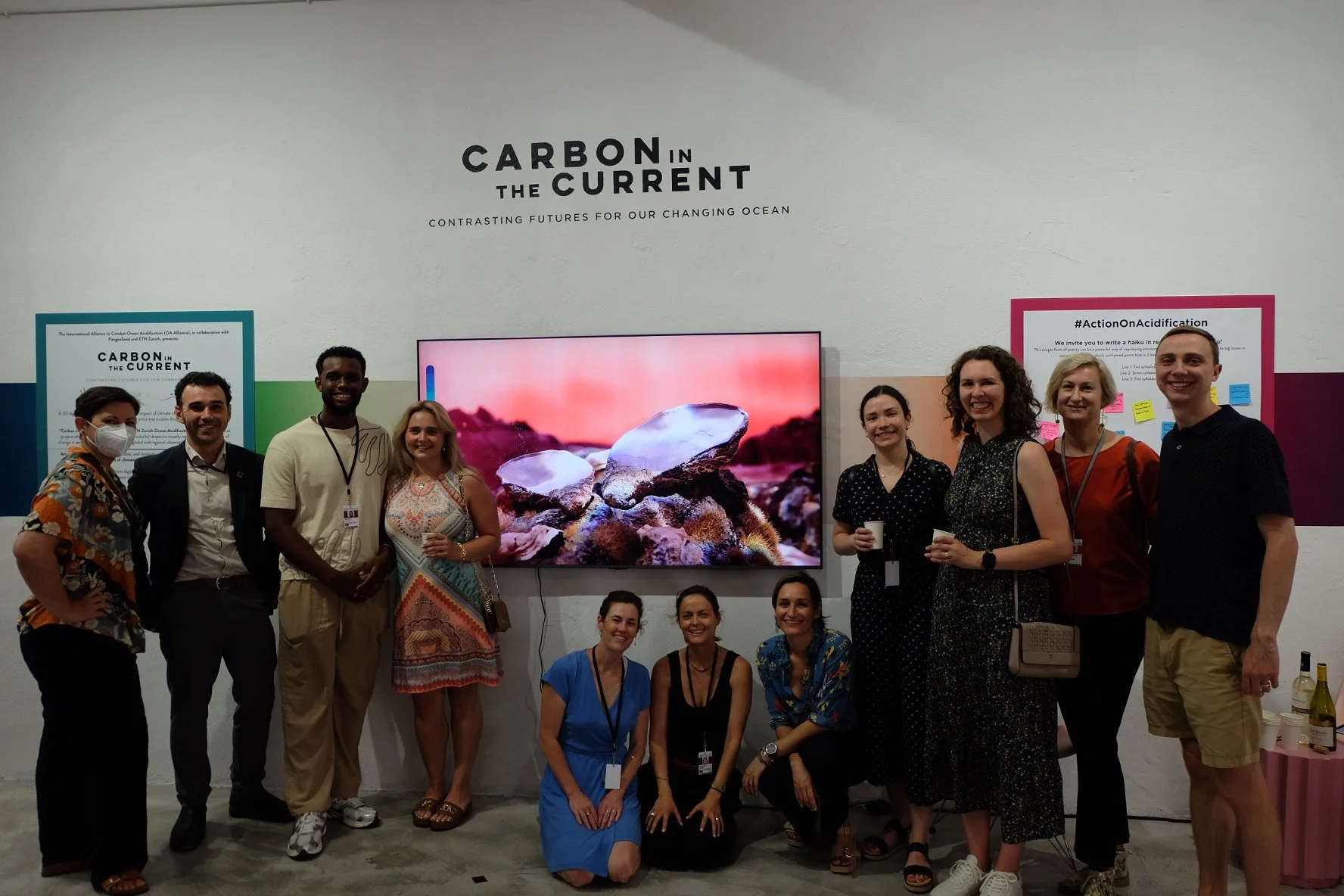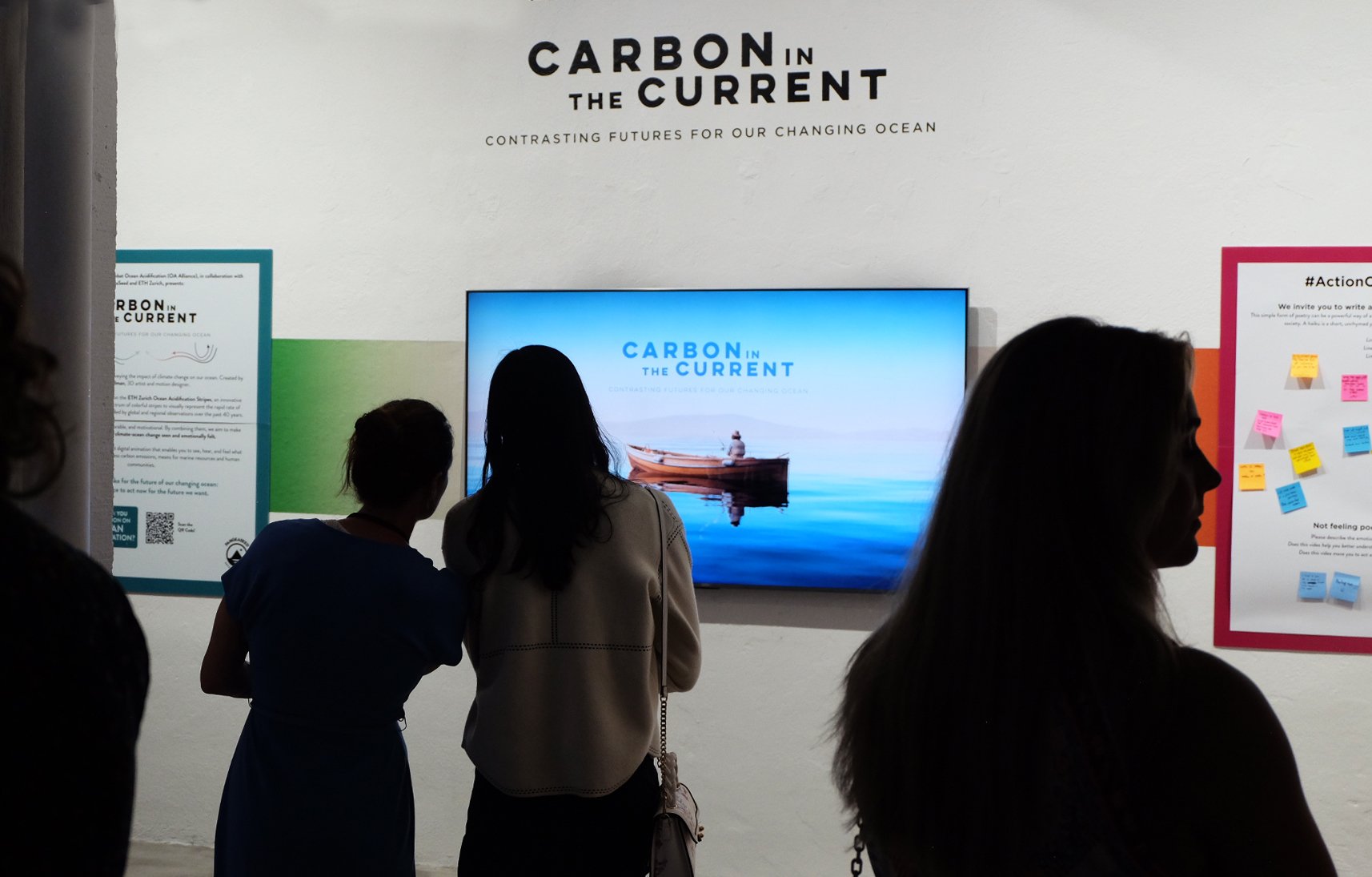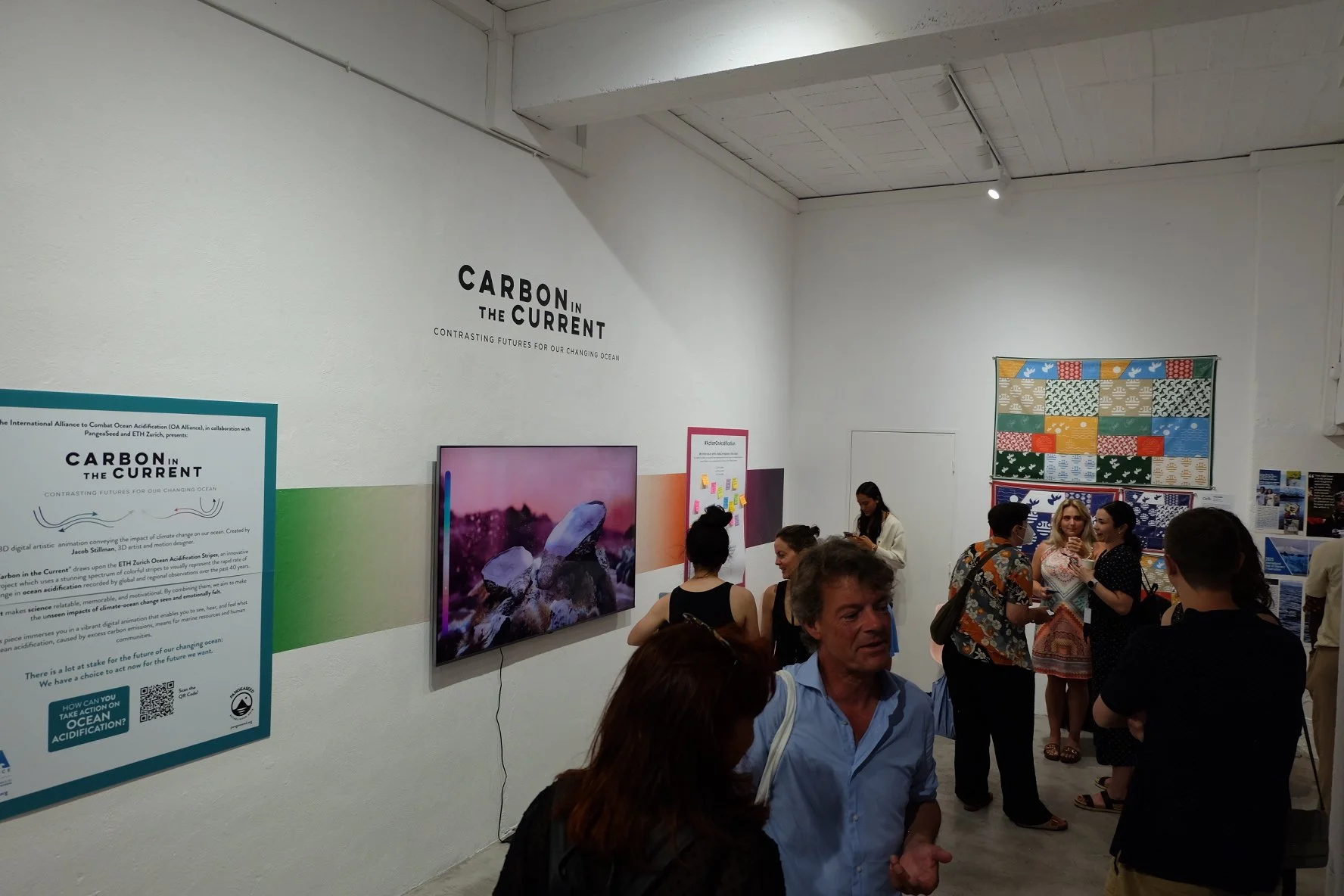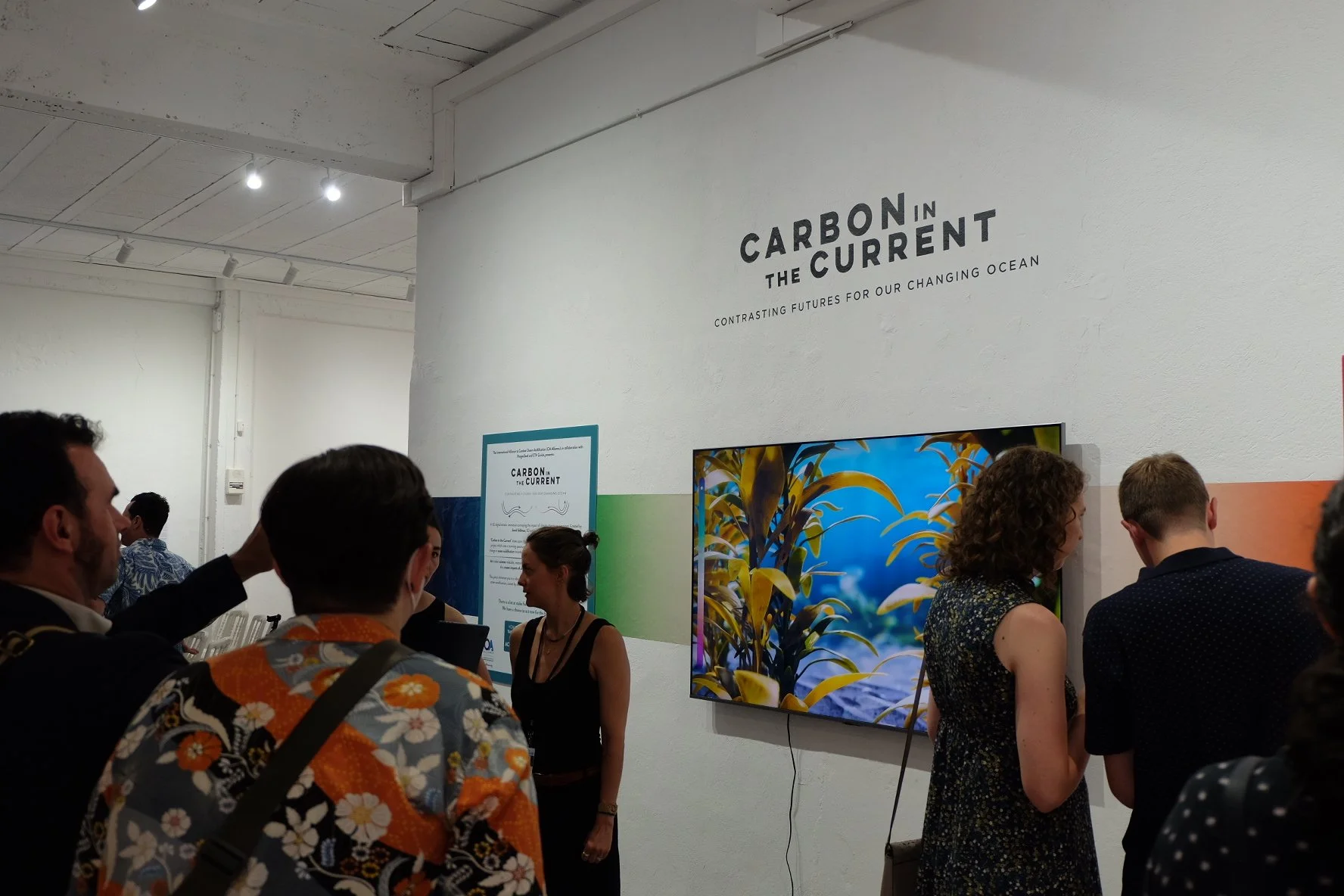recap & highlights from the 3rd UN Ocean Conference
The OA Alliance has a rich history of attending UN Ocean Conferences, going back to the first ever conference in 2017 in New York, just a year after the alliance was launched.
Eight years later, we returned to the Third UNOC 2025 in Nice with a bigger coalition and increased ambition — because the stakes to mitigate climate change and combat ocean acidification have never been higher.
We want to take you behind the scenes — where the OA Alliance delivered concrete policy wins that help shape our ocean’s future. Here’s what you need to know.
Science must be fit for local action. While global ocean observing is important, science and data must be appropriate for real life decision making. Through our work with the OA Research for Sustainability Programme we are uniting science, policy and stakeholder groups around a common approach to ensure ocean acidification science is practical, applicable and actionable for governments and users of marine resources. With 70% of all ocean acidification information being produced in the global north, we must ensure everyone has access to useable information that supports mitigation, adaptation and resilience in their own communities.
Ocean acidification and climate change are not receiving enough focus in the international ocean policy community. Healthy oceans and people were a primary focus at UNOC3, including themes such as biodiversity beyond national jurisdiction (BBNJ), equitable and sustainable development, thriving blue economies and reducing plastic pollution. While all are critical aspects of ocean health and strong communities, ocean acidification and climate change should increasingly be elevated and engaged with to ensure existential threats to these outcomes are accounted for and mitigated using policy and financial mechanisms.
Marine Carbon Dioxide Removal is gaining attention. From microalgae cultivation and blue carbon restoration to ocean alkalinity enhancement — not all marine carbon dioxide removal strategies (mCDR) are the same. Techniques will take time and, like many infrastructure projects, carry a potential for negative impacts to the ocean and marine life, while also offering unique solutions to the increasing challenge of climate change and ocean acidification. We need more evaluation of these strategies to identify potential risks or benefits to marine organisms, ecosystems, and human communities. That means we need more research to assess these strategies to understand and evaluate the potential trade-offs, uses, and far-field effects of mCDR and how these techniques might influence ocean and coastal acidification.
Momentum for ocean governance and multilateralism. It’s easy to feel stalled and rudderless when working within international politics and frameworks. Often, two steps forward are accompanied by additional steps backwards and sideways. However, a global preference for strong ocean governance and multilateralism is apparent in the form of treaties moving towards ratification, increased investments in blue bonds and ocean finance and a strong call from civil society to deliver on promises including the expansion of marine protection and clean energy transformation.
Broadening Political Leaderhip
During our side event "Policy Action on SDG 14.3" on June 11, members of the Makah Tribe of Neah Bay, Washington, launched their Ocean Acidification Action Plan — outlining concrete steps to better understand and respond to the threat of ocean acidification and other climate-ocean impacts within their region.
"We've lived here over 5,000 years — and we're trying to figure out how to survive the next 100." said Anthony Bitegeko, Natural Resource Policy Lead for the Makah Tribe.
The sovereign government was joined by Mr. Salvador Malheiro, Secretary of State of Fisheries and Maritime Affairs Portugal and Ms. Mette Westergaard Bech, Team Leader, Ministry of Environment and Gender Equality, Denmark releasing their official OA Action Plans marking a key moment for domestic OA Policy Action.
Ministers, Ambassadors and policy leads from Mexico, Netherlands, Greece, Fiji, United Kingdom, and Colombia used the side event as a platform to announce their significant progress to mainstream ocean acidification efforts across domestic policy agendas.
Defining Science for Action
We cannot manage what we do not measure. As an implementing partner of the UN Decade's Ocean Acidification Research for Sustainability (OARS) program, the OA Alliance has helped identify the most useful ocean acidification science and information for 6 decision-making outcomes.
On June 9 nearly seventy people representing a diverse group of scientists, communication professionals and community leaders gathered at the historic Le Negresco hotel to unveil the OA Information for Action Framework at our event "Science to Action on SDG 14.3.”
Under the UN Ocean Decade, this framework will guide evidence-based decisions in support of Sustainable Development Goal 14.3, "to minimize and address the impacts of ocean acidification, including through enhanced scientific cooperation at all levels".
Mr. Niall O’Dea, Senior Assistant Deputy Minister, Strategic Policy, Fisheries and Oceans Canada at Government of Canada spoke about the importance of governments stepping up to ensure applicable science is increasingly being integrated into mainstream policies, including through the creation of National OA Action Plans.
Engaging Through Creativity
On World Ocean Day, June 8, the OA Alliance in collaboration with PangeaSeed and ETH Zurich, released: “Carbon in the Current: contrasting futures for our changing ocean,” a 3D digital artistic animation conveying the impact of climate change on our ocean by making the invisible threat of ocean acidification tangible for audiences worldwide.
Carbon in the Current draws upon the ETH Zurich Ocean Acidification Stripes, an innovative project which uses a stunning spectrum of colorful stripes to visually represent the rapid rate of change in ocean acidification recorded by global and regional observations over the past 40 years.
Created by artist and motion designer Jacob Stillman — the piece asks a powerful question: What would the ocean look like if the color of seawater could change as it becomes more acidified? Would that make it easier for us to notice shellfish that are struggling to grow, populations of fish that are shrinking, and corals that are becoming dangerously fragile? Would we be more inspired to take action?
Carbon in the Current was well received as part of an exhibition at the Neo Art Gallery during UNOC3.








